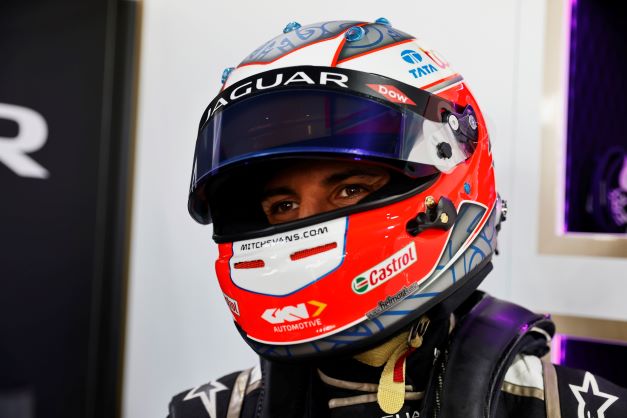How Eid will impact gold & markets – Century Financial

Eid-al-Fitr impact gold & markets
Historically, Eid has fallen in late March or early April for approximately the last 3–4 years and will continue to do so for a few more years before shifting into earlier March. Eid gifting remains a core element of this celebration. It is anticipated that more than 50% of UAE residents are willing to spend more on Eid gifts, driven by emotional and financial factors. 41% cited improved personal finances, representing an increase from 36% last year. Furthermore, 28% want to do something special for their family and friends, reflecting a 23% increase from last year.
Looking at the seasonality of gold during this period, though the specific data about these weeks isn’t available, March has been one of the most bullish months in the past 4 years. Gold has gained about 4.2% on average in March, with about a 75% hit ratio. Looking at April, the commodity has gained about 1.27% on average, with a hit ratio of about 75%. Hence, we can say that the trend around Eid Al Fitr is positive for gold.
When examining the markets over the past four years, April has consistently been one of the most bullish months for the DFM General Index, generating an average return of approximately 2.4% with a hit ratio of around 75%. This can mainly be attributed to the increased consumer spending at the end of Q1. This year again, a similar trend is expected, as a study shows that this year, consumers plan to allocate more of their budgets to socializing (51%), dining out (44%), and entertainment and staycations (43%), reflecting a renewed focus on premium experiences during the holiday. (Source: Toluna and MetrixLab and Bloomberg)
How gold demand typically moves around Eid and what to expect this year
Gold holds deep cultural significance for Middle Eastern and Arabic societies, with demand for the precious metal often spiking during festive and religious times like Eid, impacting its price in local markets. Gold has continued its significant rise this year, surging past the $3000 per ounce mark, giving investors about 15% returns so far on a year-to-date basis. This translates to UAE prices of AED 363.25 per gram for 24K, AED 336.25 for 22K, AED 322.5 for 21K, and AED 276.5 for 18K as of 25th March 2025, marking about an AED 8-10 increase in per gram prices from a month ago.
There has been a general trend of gold jewellery shopping picking up during festivals like Eid as residents and tourists purchase ornaments as gifts. However, shoppers have generally been facing record-high prices for the past few Eid festivals, impacting their purchase decisions. Local shoppers are adopting a wait-and-watch approach, delaying their purchases to wait for prices to come down further, while tourists tend not to hold back on purchases, making the most out of their short stays in the “City of Gold”.
As the festive season approaches, about 90% of UAE residents plan to give gifts in 2025, sticking to traditional elements of Eid celebrations. A survey by Toluna and MetrixLab pointed to luxury gifting rising, with about 29% of respondents specifically opting for gold and diamond jewellery, up from 27% previously. Every year, the arrival of major festivals like Eid Al Fitr and Akshaya Trithiya usually coincide, contributing to an uptick in demand for gold jewellery. Both festivals traditionally result in the busiest and most lucrative days for gold purchases in the UAE’s retail sector.
High prices could deter buyers on a tight budget, with retailers indicating consumer preferences shifting towards 18K gold and towards lighter and more affordable options. The average spend on Eid jewellery gifting ranges between AED 1000 and AED 1800, with 18K pendants, earrings, and bracelets dominating purchases, compared to 24K or 22K gold. However, for investment purposes, buyers still prefer 22K gold in traditional markets like the Gold Souk. In a bid to keep up the demand, major gold shops are offering compelling promotions – including discounts on making charges, raffles, and free gold coins on purchases above a given threshold – to entice buyers. Some relief for local buyers during surging gold prices could be the slight drop in prices of about AED 4 per gram from peak levels achieved a few days ago.
For the year ahead, the trajectory of gold remains bullish, driven by tariff uncertainties, geopolitical tensions, and rising inflation expectations. This consequent economic uncertainty is pushing investors to a flight to gold’s safety as a reliable store of value. Robust investment demand, evident by ETF inflows and continued central bank buying in a bid to reduce US dollar dependence, has raised price targets for gold above $3200 by the end of the year.
Market activity and investor sentiment leading up to the holiday
Over 10 years, it has been observed that March is typically a slow month for the Dubai and Abu Dhabi markets. However, the month of April has historically seen average returns of 5% and 3.3%, respectively, as consumers gather in excitement for the Eid holidays. Moreover, the FTSE ADX consumer discretionary sector index has given an average return of 2.5% in April since its launch in 2022. Hence solidifying the Eid effect. (Source: Bloomberg)
Moreover, Eid-Al-Fitr marks a time of increased spending, travel, and Tourism in the Middle East region as consumers plan to allocate more of their budgets to socialising, dining out, entertainment and staycations, which reflects a renewed focus on premium experiences during the holiday benefiting the economy and overall markets.
Broader economic trends linked to spending, travel, or commodities during this period
Looking at broad economic trends, enthusiasm for shopping and leisure activities during Eid Al Fitr is expected to increase, with 46% expecting to spend more than they did in 2024. Shopping malls continue to be a major attraction, with 78% of residents planning to go to malls for retail purposes and 72% for entertainment, reflecting growing consumer demand for Eid experiences beyond shopping.
Moreover, the return of the Great Online Sale this year is expected to largely benefit the economy during Eid, one of the busiest periods for shopping in Dubai. The immersive sale is set to lift the city’s retail landscape to exciting new heights, transporting shoppers into a digital-first world like never before. Consumers who register on the Great Online Sale website will gain access to exclusive discount codes and prize opportunities. (Source: Bloomberg)
According to a survey by Toluna and MetrixLab, gifting remains a core part of celebrations, with a notable rise in self-gifting as well, increasing from 39% to 42% YoY, as consumers indulge in personalised treats and luxury purchases. Luxury gifting is also expected to rise, with 55% opting for chocolate, dates, and sweets; gold and diamond jewellery demand could rise to 29%, while major electronic devices are also gaining popularity, rising from 13% to 15%. Further, 52% of UAE residents are considering staycations as part of their Eid plans. To cater to this, major hotel chains are offering around 30% discount on stay and dining. These trends are expected to benefit the consumer discretionary and hospitality industries in the coming month. (Source: Toluna and MetrixLab)
Further, Emirates is expanding its flight schedule for the upcoming holidays to accommodate a surge in travelers. The airline expects over 371,000 passengers to fly with them during the festive period. To meet this increased demand, the company is adding 17 extra flights. This expansion comes as more people travel during long weekends and festivals like Eid-Al-Fitr. These efforts made by the company highlight the underlying dynamics of increasing demand in the U.A.E’s aviation industry.
Last Updated on 4 days by News Desk 1













